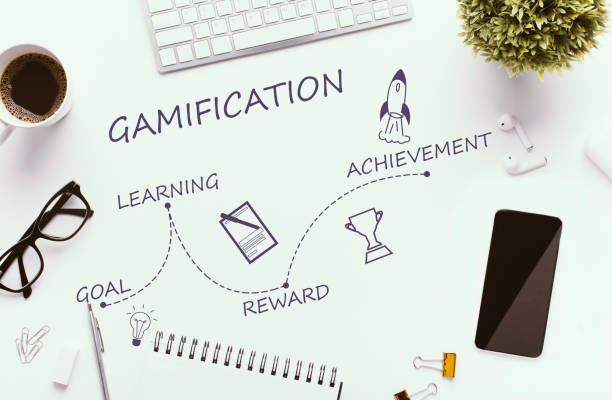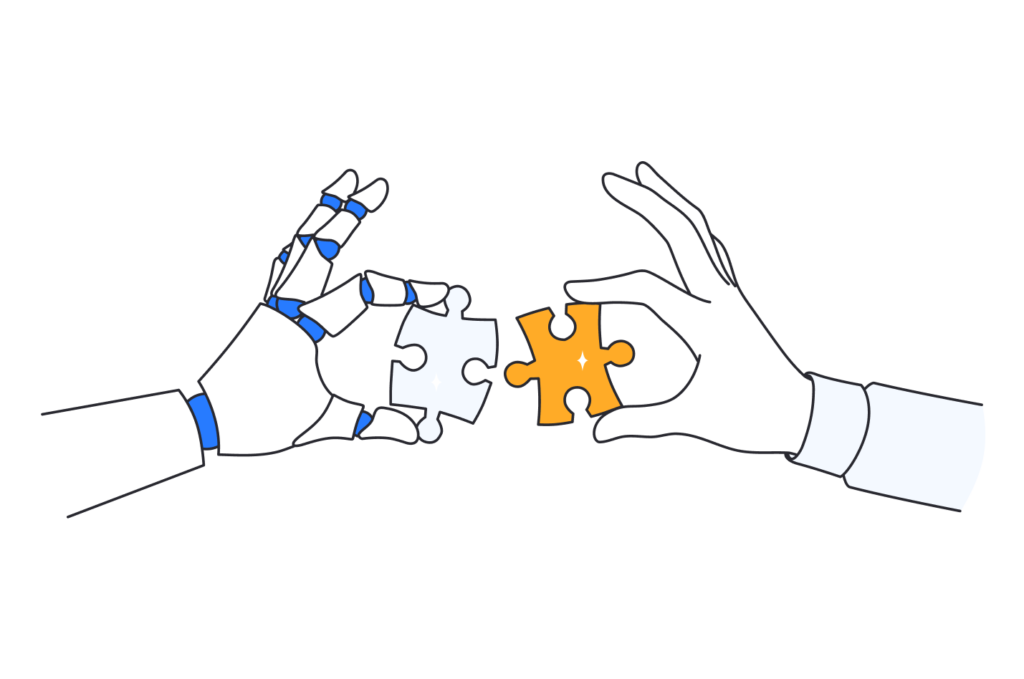In today’s digital age, engagement is key to capturing and retaining users’ attention. One effective way to achieve this is through the use of gamification techniques. Gamification refers to the application of game elements and mechanics in non-gaming contexts to motivate and engage employees while driving user engagement and participation.
By incorporating gamification elements such as awarding points, badges, leaderboards, and challenges, and offering rewards into websites, mobile apps, or educational platforms, businesses and organizations can create an immersive and interactive experience for their users. Gamification transforms unfinished tasks into exciting and compelling activities, encouraging users to actively participate and achieve desired outcomes.
The power of the gamification market lies in its ability to tap into fundamental human desires, to foster healthy competition, achievement, recognition, and social interaction. When implemented effectively, these techniques can foster a sense of accomplishment, promote a sense of community, and drive human motivation.
Moreover, gamification can be applied in various domains, from education and employee training to marketing and employee engagement. It can significantly impact learning outcomes, customer loyalty, and increased employee performance.
In this definitive guide, we will explore several gamification techniques that can effectively boost user engagement and drive productivity. We will delve into specific strategies, examples of successful implementation, and the underlying psychological principles that make these techniques so effective.
Whether you are a business owner looking to increase customer loyalty, an educator seeking to enhance student participation, or a manager trying to boost productivity, this guide will provide you with the necessary insights and actionable tips to harness the power of gamification and create an engaging experience for your target audience. So, let’s dive in and unlock the secrets of gamification!

What is Gamification?
Gamification is the process of incorporating basic game elements, mechanics, and dynamics into non-game contexts, such as educational software, training fun programs, or business strategies. By leveraging elements like bonus points, leaderboards, challenges, rewards, and narratives, gamification aims to enhance user engagement, extrinsic motivation, and learning outcomes.
In the realm of eLearning strategy, gamification involves transforming traditional educational content into interactive and immersive experiences that mimic the structures and incentives found in games. This can include incorporating storytelling elements, virtual reality simulations, learner avatars, quizzes, progress bars, streaks, leaderboards, badges, competitions, team play, and social interactions to keep employees engaged and motivated.
Gamification is not limited to just educational settings; it has also been successfully applied in various industries, including business, online marketing, and even healthcare. By tapping into human psychology and behavioral motivation, gamification can drive results related to desired behaviors, encourage active participation, foster a sense of accomplishment, and simply track progress.
Overall, gamification offers a powerful tool for transforming mundane tasks into exciting challenges, fostering collaboration and competition, and ultimately enhancing user experiences and outcomes across a wide range of fields.
Impact of Gamification Techniques on Corporate Training
Implementing gamification techniques in corporate training modules has shown a significant impact on employee performance. By incorporating elements such as points, leaderboards, quizzes, and competitions, employees are motivated to actively engage in the learning process.
One of the key benefits of using gamification in training is the increase in motivation and engagement levels among employees. When employees are rewarded with points for completing tasks or achieving milestones, they are more likely to be actively involved in their learning and development paths. This motivation can lead to improved performance as employees strive to do well in assessments and compete to see their names on the top of the leaderboard.
Furthermore, gamification techniques can also enhance employee retention and knowledge retention. By turning the training process into a game-like experience, employees are more likely to remember and apply the information they have learned. This can result in a more skilled and knowledgeable workforce, ultimately leading to improved performance in their roles.
Overall, the impact of gamification techniques on employee performance is undeniable. By leveraging game mechanics in corporate training, organizations can create a more engaging and effective learning experience that ultimately translates into improved employee performance and productivity.
Gamify Your Workplace: Strategies and Examples for Healthy Competition
Gamification techniques have proven highly effective in fostering a motivating and engaging learning environment. When applied to a corporate setting, these techniques can transform training programs and enhance employee engagement, making educational content more interactive, exciting, and memorable. Here, we’ll explore some key strategies and examples of how gamification techniques for corporate training can be used to boost learning and performance in the workplace.
Game-Based Learning
One popular gamification strategy is incorporating games into the learning process. This can include interactive simulations, role-playing scenarios, or virtual reality experiences that allow employees to engage with the content. For example, a language learning app might enable users to earn points or progress to higher levels by completing vocabulary quizzes or participating in conversation practice with virtual characters. By turning learning into a game, the process becomes more enjoyable, immersive, and effective for knowledge retention.
Progress Bars and Points System
Another effective technique for learning is tracking progress and incorporating achievement systems. This involves breaking down training materials into smaller, manageable tasks or levels. As employees complete specific tasks, they earn badges, unlock new content, or receive virtual rewards. This sense of progression and accomplishment motivates employees to continue their learning journey and provides a sense of customer satisfaction and recognition for their efforts. For instance, in a gamification platform, employees can earn badges or certificates upon completing each module or passing assessments, creating a visual representation of their achievements.
Collaborative Learning
Gamification can also promote collaboration and social interaction among employees. By incorporating multiplayer games or group challenges, employees can work together towards a common goal, share knowledge, and provide support to each other. This not only enhances the learning experience but also develops important teamwork and communication skills. For example, a coding platform might offer real-time coding challenges or competitions, allowing employees to collaborate and compete, fostering a healthy competitive spirit.
Challenges and Gamified Quizzes
Creating challenges or quests for employees to complete is another gamification strategy. These challenges can be designed as missions, puzzles, or tasks requiring employees to apply their knowledge and skills in a problem-solving business context. By completing these challenges, employees earn points, unlock new levels, and move closer to the ultimate goal. For instance, a language learning app might present users with translation tasks or conversation challenges, encouraging active participation and continuous learning.
Personalization and Customization
Personalization is a crucial aspect of effective gamification for learning. By allowing employees to customize their learning experience, it becomes more tailored to their individual needs and preferences. This can be achieved by providing options to choose avatars, select themes, and adjust difficulty levels. Personalization and customization greatly enhance engagement and motivation, making employees feel a sense of ownership and investment in their progress.
Enhancing Competitive Advantage
Gamification techniques in corporate training have become increasingly popular as companies strive to enhance employee engagement and intrinsic motivation. By incorporating elements such as leaderboards, scoring systems, and challenges, businesses can tap into the competitive drive of their employees, driving them to excel and achieve their training objectives. Real-time feedback loops and progress tracking provide immediate insights into performance, to motivate employees and help them stay on track.
A recent success story highlights the positive impact of gamification on employee performance. A company experienced higher overall job performance from employees who engaged with its gamified training program, demonstrating the effectiveness of these techniques in driving engagement and results.
Overall, applying gamification in corporate training is a powerful tool that can help businesses gain a competitive edge by increasing employee motivation, customer engagement, and learning retention. By integrating gamification techniques into their training programs, companies can create a more dynamic and engaging learning environment that drives performance and business outcomes.
Key Takeaways
Global gamification in education and AI has proven to be an effective tool in improving engagement, user experiences, and desired behaviors. By adding game-like elements to the traditional gamified system, students, and users are more motivated to participate and achieve their goals.
Returning.AI is a platform that can help meet your gamification needs. With its AI-powered gamification tools, Returning.AI can customize gamification strategies tailored to your specific requirements. It can track user engagement, analyze data, and provide insights on how to enhance the gamification experience. By utilizing Returning.AI, you can efficiently implement gamification in education or AI systems, leading to increased user engagement and improved outcomes.


